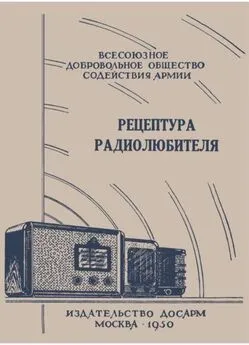Пол Глассер - Первичная консультация. Установление контакта и завоевание доверия
- Название:Первичная консультация. Установление контакта и завоевание доверия
- Автор:
- Жанр:
- Издательство:Литагент «Когито-Центр»881f530e-013a-102c-99a2-0288a49f2f10
- Год:2003
- Город:Москва
- ISBN:0-8039-7141-9, 5-89353-092-6
- Рейтинг:
- Избранное:Добавить в избранное
-
Отзывы:
-
Ваша оценка:
Пол Глассер - Первичная консультация. Установление контакта и завоевание доверия краткое содержание
В руководстве, написанном известными специалистами, психологом Сарой Файн и социальным работником Полом Глассером, рассматриваются закономерности и особенности начального этапа взаимодействия консультанта и клиента. Детально описаны динамика психотерапевтического процесса и приемы установления контакта и завоевания доверия во время первичной консультации различных групп клиентов, как добровольных, так и недобровольных.
Книга предназначена как для начинающих, так и для опытных специалистов, в задачи которых входит оказание помощи другим людям: психологам, социальным работникам, юристам, педагогам и т. д.
Первичная консультация. Установление контакта и завоевание доверия - читать онлайн бесплатно ознакомительный отрывок
Интервал:
Закладка:
Kagle, J. D., & Kopels, S. (1994). Confidentiality after Tarasoff. Health and Social Work in Education, 19 (3), 217–222.
Kardon, S. (1993). Confidentiality: A different perspective. Social Work in Education. 75(4), 247–250.
Kellerman, J. (1993). Devil’s waltz. New York: Bantam.
Kempler, W. (1981). Experiential psychotherapy within families. New York: Bruner/Mazel.
Knippen, J. T., & Green, T. B. (1994). How the manager can use active listening. Public Personnel Journal, 23(2), 357–359.
Lindsey, D. (1994). Mandated reporting and child abuse fatalities: Requirements for a system to protect children. Social Work Research, 18(1), 41–54.
Lum, D. (1996). Social workpractice and people of color: A process stage approach (3rd ed.). Pacific Grove, CA: Brooks/Cole.
McGill, D. W. (1992). The cultural story in multicultural family therapy. Families in Society: The Journal of Contemporary Human Services. 73(6), 339–349.
Meltsner, M. (1993). The jagged line between mediation and couples therapy. Negotiation Journal. 9 (3), 261–269.
Morrissette, P. (1992). Engagement strategies with reluctant homeless young people. Psychotherapy, 29 (3),447–451.
Miller, C. J., & Crouch, J. G. (1991). Gender differences in problem solving: Expectancy and problem context. The Journal of Psychology. 125(3), 327–336.
Minuchin, S. (1974). Families and family therapy. Cambridge, MA: Harvard University Press.
Minuchin, S., & Fishman, H. C. (1981). Family therapy techniques. Cambridge, MA: Harvard University Press.
Mann, B., & Murphy, K. C. (1975). Timing of self-disclosure, reciprocity of self-disclosure, and reactions to an initial interview. Journal of Counseling Psychology, 22(4), 303–308.
Navarre, E.,Glasser, P. H., & Costabile, J.(1985). An evaluation of group work practice with AFDC mothers. In M. Sundel, P. Glasser, R. Sarri, & R. Vinter (Eds.), Individual change through small groups (pp. 391–407). New York: Free Press.
Newman, J. L. (1993). Ethical issues in consultation. Journal of Counseling and Development, 72(2), 148–156.
Nugent, W., & Halvorson, H. (1995). Testing the effects of active listening. Research on Social Work Practice, 5(2). 152–175.
Oppenheim, L. (1992). The first interview in child protection: Social work method and process. Children and Society, 6(2), 132–150.
Pagelow, M. D. (1984). Family violence. New York: Praeger.
Patterson, C. H. (1990). Involuntary clients: A person-centered view. Person Centered Review, 5(3), 316–320.
Polansky, N. A., Ammons, P. W., & Gaudin, J. M. (1985). Loneliness and isolation in child neglect. Social Casework. 66, 33–47.
Proctor, E. K. (1990). Evaluating clinical practice: Issues of purpose and design. Social Work Research and Abstracts. 26(1), 32–40.
Rooney. R. H. (1992). Strategies for Work with Involuntary Clients. New York: Columbia University Press.
Sachse, R. (1993). The effects of intervention phrasing on therapistclient communication. Psychotherapy Research, J(40), 260–277.
Seabury, B. A. (1976). The contract: Uses, abuses, and limitations. Social Work. 21(1), 16–21.
Sexton, T. L. (1994). Systemic thinking in a linear world: Issues in the application of interactional counseling. Journal of Counseling and Development, 73(3), 249–258.
Smith-Bell, M., & Winslade, W. J. (1994). Privacy, confidentiality, and privilege in psychotherapeutic relationships. American Journal of Orthopsichiatry. 64(3), 180–193.
Social work code of Ethics. (1981). Social Work. 26(1), 6.
Stein, M. L., & Stone, G. L. (1978). Effects of conceptual level and structure on initial interview behavior. Journal of Counseling Psychology. 25(2), 96—102.
Sternberg, R. J. (1994). Thinking Styles: Theory and assessment at the interface between intelligence and personality. In R. J. Sternberg (Ed.), Personality and intelligence (pp. 169–187). New York: Cambridge University Press.
Sue, D. W., & Sue, D. (1990). Counseling the culturally different: Theory and practice (2nd ed.). New York: John Wiley.
Sue, S., & Morishima, J. K. (1982). The mental health of Asian Americans. San Francisco: Jossey-Bass.
Sundel, M., Radin, N., & Churchill, S. (1985). Diagnosis in group work. In M. Sundel, P. Glasser, R. Sarri, & R. Vinter (Eds.), Individual change through small groups (pp. 117–139). New York: Free Press.
Tolstoy, L. (1935). Anna Karenina. New York: The Modern Library.
Truax, C., & Mitchell, K. (1971). Research on certain therapist interpersonal skills in relation to process and outcome. In A. Bergin & S. Garfield (Eds.), Handbook of psychotherapy and behavior change (pp. 299–344). New York: John Wiley.
VandeCreek, L., & Knapp, S. (1993). Tarasoff and beyond: Clinical and legal issues in the treatment of life-endangering patients. Sarasota, FL: Professional Resource Exchange.
Vinter, R. (1985). The essential components of social group work practice. In M. Sundel, P. Glasser, R. Sarri, & R. Vinter (Eds.), Individual change through small groups (pp. 11–34). New York: Free Press.
Watkins C. E., & Terrell, F. (1988). Mistrust level and its effects on counseling expectations in black-white counselor relationships: An analogue study. Journal of Counseling Psychology, 25(2), 194–197.
Weissberg, J. H. (1987). The fiscal blind spot in psychotherapy. Journal of the American Academy of Psychoanalysis, 17(3), 475–482.
Wolfe, R. L. (1975). Poem. The Personnel and Guidance Journal. 205.
Интервал:
Закладка:






